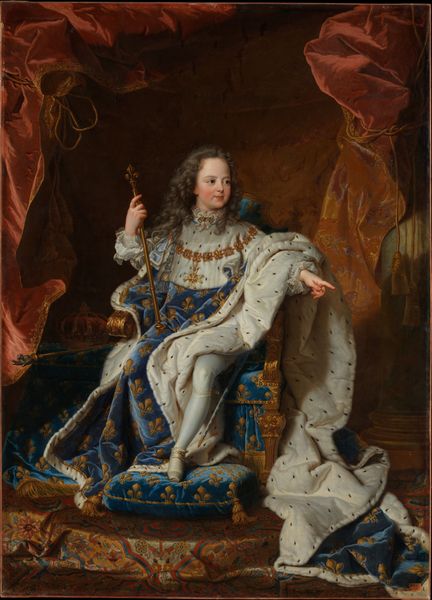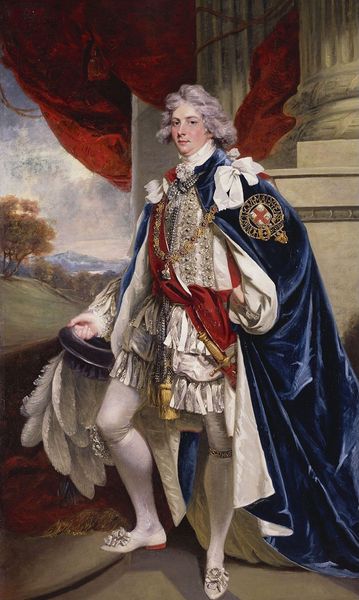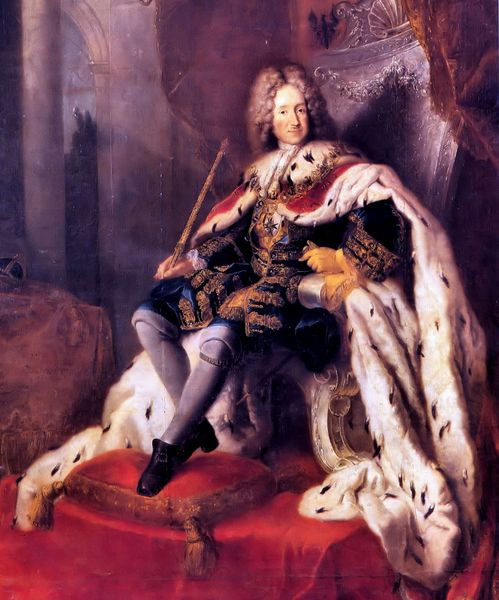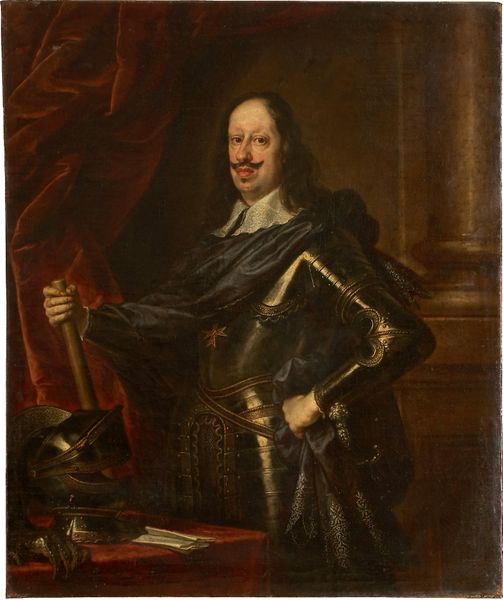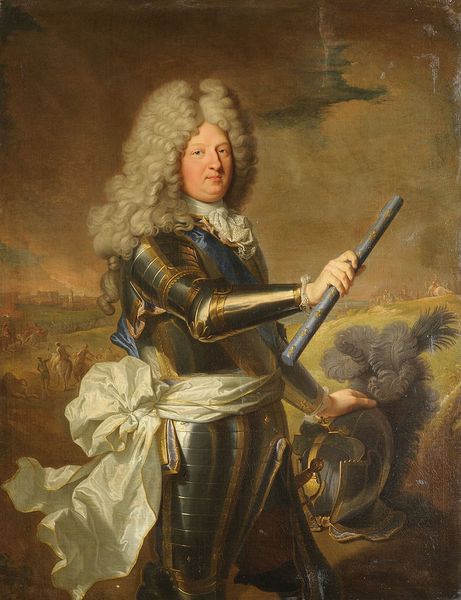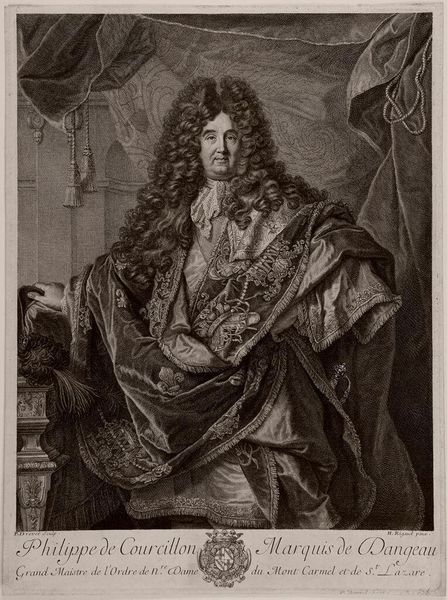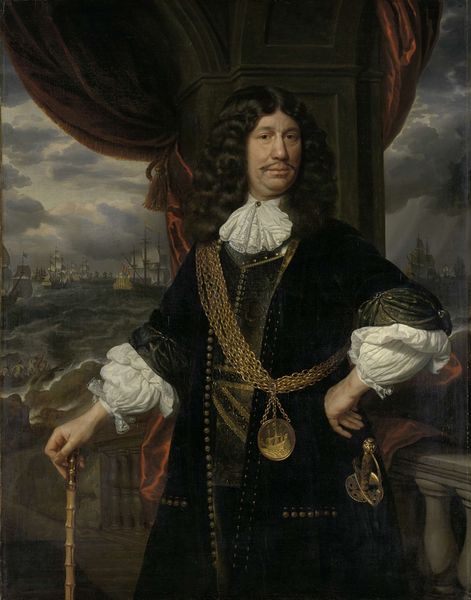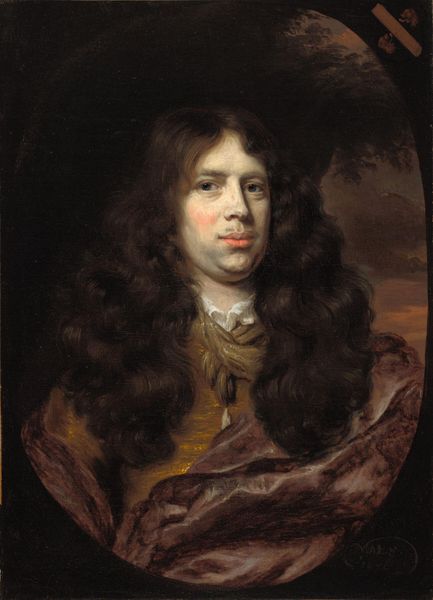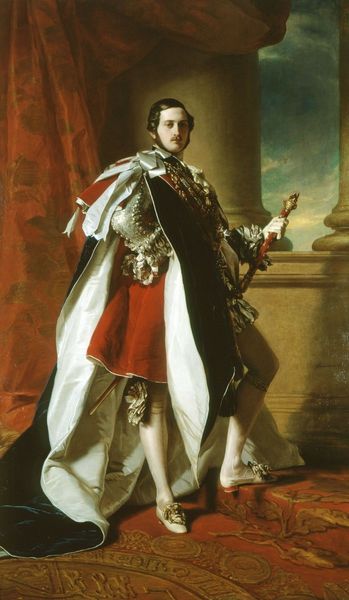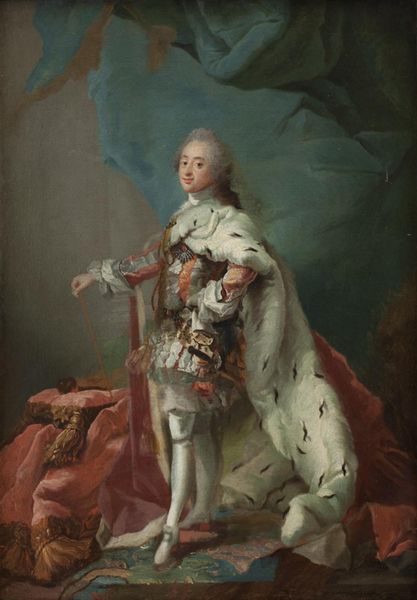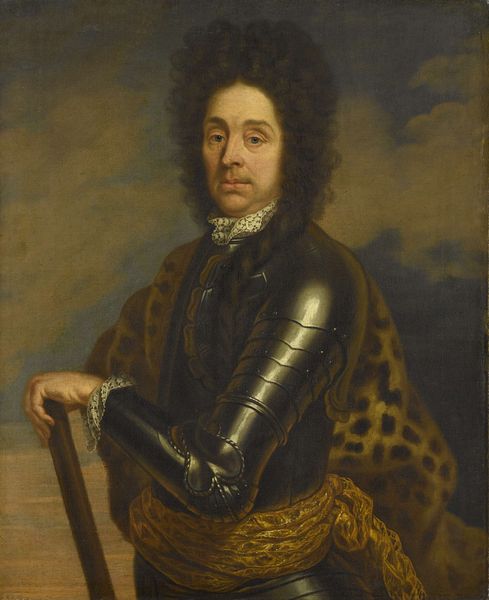
oil-paint
#
portrait
#
baroque
#
oil-paint
#
oil painting
#
history-painting
#
academic-art
Copyright: Public domain
Editor: So here we have Hyacinthe Rigaud’s grand portrait, "Louis XIV, Roi de France," painted in 1701 using oil paints. I find the opulence almost overwhelming! What strikes you most about this piece? Curator: Immediately, the portrait operates as a key example of power imagery in the Baroque era. Rigaud wasn't just painting a likeness; he was constructing an image of absolute monarchy. Consider the setting: the rich fabrics, the fleur-de-lis, the crown. How do these details contribute to the message being conveyed? Editor: It feels very staged, almost like propaganda. It makes me wonder how much of it is 'real' versus what Louis wanted people to think was real. Curator: Precisely. This gets at the core of understanding portraits of powerful figures, particularly during this period. The museum itself is playing a role in that. Think about where this portrait was originally displayed and who would have seen it. Rigaud cleverly flatters Louis: his legs are emphasized, perhaps compensating for his height. It shows how the monarchy used portraiture as a form of publicity, almost a form of…social media, if you will. Editor: So it’s not just about the individual, it's about solidifying an idea, almost myth-making in paint? Curator: Exactly. It's about the construction of an ideal ruler for the gaze of the public and even for posterity. The artifice becomes the message. What do you take away from understanding this political element? Editor: I see it in a totally new way. Before, the lavishness seemed superficial, but now it represents active communication, even manipulation of the monarchy's public image. Curator: It demonstrates the active role art plays in shaping cultural and political perceptions, one of the monarchy's key methods of visually solidifying power, and which continues today.
Comments
No comments
Be the first to comment and join the conversation on the ultimate creative platform.
